Ultimate Guide to Everything IoT & How to Protect Them in 2024
How the explosion of IoT will continue throughout 2024 and beyond, changing everything we do and altering our lives for the better.
The term “Internet of Things” (IoT) can be easily misunderstood. The best way to define and describe IoT: the operation of everyday objects via the internet through computing devices embedded inside them. These “everyday objects” can include, kitchen appliances, lighting, heating units, security systems and much more.
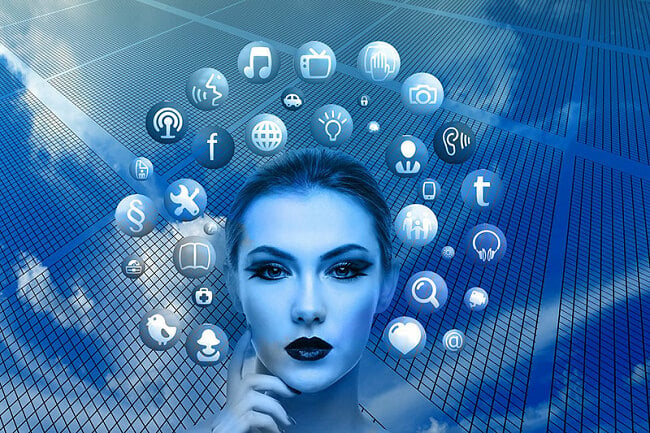
In 2018 alone, it was estimated that over 11 billion devices were connected to the internet worldwide. And as technology advances at a rapid rate, an IoT explosion will continue throughout 2024 and beyond, changing everything we do and altering our lives for the better.
So what exactly is Internet of Things? How does it impact our daily lives? Does it pose any serious security threats? Let’s take a closer look.
Quick navigation:
- 1 IoT Explained
- 2 IoT Components
- 3 The Growth of IoT
- 4 Some IoT Application Areas (Impact of IoT)
- 5 Some Popular IoT Devices
- 6 IoT and Data Security
- 7 Collecting Data from your Home
- 8 Securing your Home Data
1 IoT Explained
As we touched on above, IoT involves various types of smart devices being told what to do or communicating with each other to improve the quality of life around us – it makes our lives easier. This takes place through network connectivity, wireless in most cases.
IoT has now become a huge part of our everyday lives, people are understanding it and they’re jumping on board. Devices are getting “smarter”, and anything from lights, thermostats, refrigerators, to coffee machines, cars and TVs, are all linking together on sophisticated network connections to complement our existence.
2 IoT Components
IoT is a complex structure, made up of various elements starting with sensors and ending with actuators. Confused? We’re here to explain exactly what goes on.
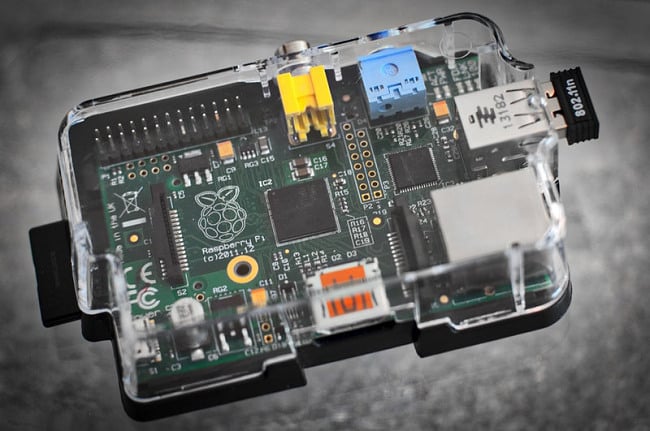
Simply put, IoT isn’t just one technology – but a combination of various deeply connected technologies.
- Sensors to Actuators
- The Network
- Apps, platforms and services
1. Sensors to Actuators
IoT objects are mostly low powered devices that weren’t initially built to be “smart”, but have developed over time. The devices are mostly low cost and wireless. The sensors attached to the objects are continuously collecting data from the environment and then transmitting it to the next layer.
Common sensors include thermostats, pressure sensors, humidity sensors, proximity detection, speed sensors, RFID tags, etc. The actuator is like the switch which makes the command a reality on the device.
2. The Network
The standard network of communication in IoT is Wi-Fi internet, but most modern smart devices and sensors can also be connected through other low powered networks – Bluetooth, Z-wave, ZigBee, LoRAWAN, etc. Each of these networks offer up pros and cons regarding data transfer rate and overall efficiency.
IoT network development is still ongoing, and the aim is to improve technology, increase battery life as well as efficiency. One of the latest protocols added is 6LoWPAN, which is basically IPv6 over Low Power Wireless Personal Area Networks. The technology has been adapted by many companies, and is now being used to ensure energy efficient data transmission in IoT networks.
3. Apps, platforms and services
IoT Apps, platforms and services are the middleware used to connect IoT components. They collect and distribute data, convert between protocols, as well as store and analyze data.
These services are mostly cloud-based, and are responsible for processing data then turning it into useful information. An example of a commonly used service in IoT is Amazon Web Service (AWS). Others include Microsoft Azure, IBM Watson Bluemix, and ThingWrox.
3 The Growth of IoT

It was a refrigerator connected to the internet, where one could check to see if there was a drink available, and if it was cold, before opening the fridge. Back then the idea was just referred to as “embedded internet” or “pervasive computing.”
“Internet of Things” is born
The term “Internet of Things” wasn’t officially coined until 1999 when Kevin Ashton, co-founder of MIT’s Auto-ID Center, used it in his work for Procter & Gamble. At that time, Kevin was working in a supply chain organization, and he wanted to get the attention of senior management to focus on RFID, by then a new emerging technology.
Since the internet was the trend in 1999, Kevin decided to call his presentation “Internet of Things”. The term was born, but it didn’t get much attention for the next 10 years.
IoT Takes off
The big break for Internet of Things came in the year 2008 when IPSO Alliance formed a partnership of industry players to promote device connectivity. Firms then started investing in IoT in order to put it into production.
In 2010, the Chinese government announced that it had seen the potential in IoT and that it would make it a strategic priority in their 5-year plan. The following year, Gartner, the world’s leading research and advisory company, included Internet of Things in their list of emerging phenomena.
In 2012, “Internet of Things,” was the theme of Europe’s biggest tech conference, LeWeb. By this time, the term Internet of Things had become popular, and magazines like Forbes, Wired, and Fast Company had started using it in their publications. The following year International Data Corporation (IDC) projected IoT technology and services to “generate global revenues of $4.8 trillion in 2012 and $8.9 trillion by 2020, growing at a compound annual rate (CAGR) of 7.9%.”
In 2014, the term Internet of Things reached mass market awareness after Google announced that they would buy Nest, an American manufacturer for smart home products, at a price of $3.2bn.
From there, IoT transformed our way of living, and it has brought us many benefits, from energy saving, to healthcare and growth of businesses.
Today, you can use it for almost anything, from your smart pillow waking you up, to your lights coming on automatically, your thermostat adjusting heat to your preferred temperatures, or the coffee maker brewing your coffee in the morning!
4 Some IoT Application Areas (Impact of IoT)
According to statistics, the main uses of IoT can be found in improving customer experiences, enabling safety, attaining cost efficiencies, improving productivity, and gaining supply chain visibility.
It is expected that IoT will continue to grow exponentially and give rise to new markets around the globe. Here are some of the areas which have been wholly transformed by this revolutionary concept, today:
IoT at Home
Even though IOT has been expanding in every sector, the highest growing sector is IoT home. Actually, we are on the brink of a smart-home boom! According to a recent study by Intel Corporation, 71% of the people interviewed expect to see at least one smart-home device in every home by 2025. Another 68% are confident that smart homes will become as common as smartphones within the next decade.
An example of IoT at home can be seen in smart lights, in the Philips Hue bulb and thermostats which allow you to control them remotely. Another good example is Amazon dash buttons. If you are not familiar with those, they are Wi-Fi connected devices that allow you to re-order your favorite product at the press of a button. The Dash Replenishment Services even take this a step further and automatically order the products when they sense that supplies are running low.
Smart Cities
Cities around the world are leveraging the growth of IoT to improve life, service delivery, as well as cut on costs and maximize revenue. Actually, a study by Juniper Research that was sponsored by Intel estimated that smart cities have the potential to “give back” 125 hours to every resident in a year!”

In transportation, smart cities advance the use of electric cars and bike sharing while at the same time improve bus and parking systems. Buses can interact, and users can always find out the locations of the buses. Those driving electric cars can see the locations of electronic charging points to help with navigation.
If you are in town and want to park, you won’t need to hunt around for parking. The parking system will show you available parking slots near you, saving energy and time. These sensors will also collect the statistics to help the city maximize on parking income.
The lighting system in a smart city is used to preserve energy as well as collect various statistics. They can sense when pedestrians are in close proximity and when the streets are empty. The same lights are also equipped with sensors that can detect air quality and help the city curb issues like air and noise pollution. Other sensors can even detect accidents and send the information for action to be taken.
In waste management, smart bins monitor waste levels and optimize collection routes. This will help the municipal reduce the costs of checking every bin on every route. Other advanced bins can even sense hazardous or offensive water material!
Industrial IoT
Industrial Internet of Things (IIoT) is rapidly growing, and it currently accounts for the biggest chunk of IoT spending. Accenture estimates that IIoT could add $14.2 trillion to the global economy by 2030. IIoT is mostly used in manufacturing, and it focuses on the use of cyber-physical systems to monitor and control factory process, as well as use the collected data to make informed decisions.
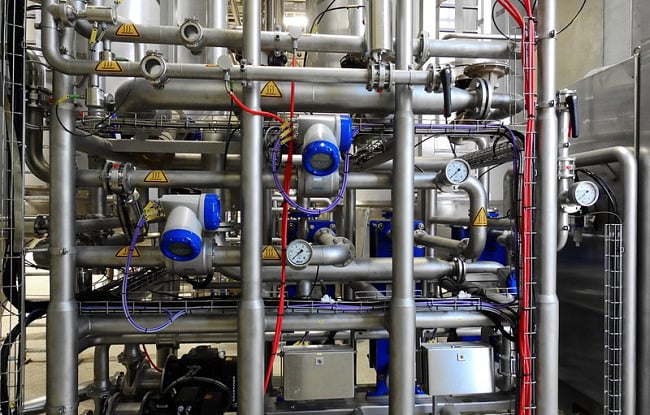
Another huge benefit of IoT in the manufacturing industry is predictive maintenance. Without IoT, companies just do wholesome maintenance based on a period of time or a machine’s history. This leads to unnecessary expenses due to the involved guesswork. With IoT, sensors usually monitor the various machines and report on the condition, or if any issue arises. This saves time, labor, resources, and early signs of failure are always reported. This leads to lower down times, and the improved manufacturing process will definitely lead to higher product quality.
Agriculture
IoT has greatly improved agriculture in both farming and livestock management. There are farming sensors that collect tons of data on soil quality, weather conditions, crop progress, and cattle health. This data is then used to track performance, equipment and treatment efficiency etc. The data can also be used to foresee the output of production which will allow farmers to plan on how to distribute their produce.
IoT also helps manage cost and reduce waste since farmers will have more control over the production process. The automation brought about by IoT in processes like fertilizing, irrigation and pest control also greatly helps in reducing cost and wastage. Thanks to IoT in agriculture, farmers can now increase production and maximize on profit.
IoT in Health
The use of IoT in healthcare has produced unparalleled benefits, which have improved the quality and efficiency of treatments and generally improved the health of patients.
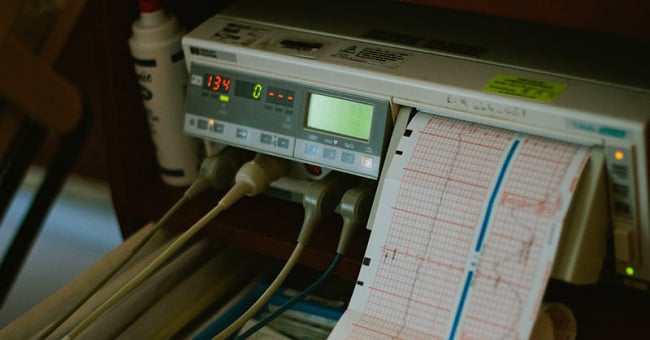
Hospitals with IoT connected devices can remotely monitor a patient’s health using data collected by medical devices, like heart monitors and insulin pumps. This way, they can always catch early signs of complications and take preventive action.
5 Some Popular IoT Devices
Here are some of the most popular IoT devices. Most of these devices are found at home and are used on a daily basis.
Amazon Echo:
The Amazon Echo is a hands-free speaker from Amazon that can be controlled with just your voice. The smart device usually connects to Alexa, Amazon’s voice-controlled intelligent personal assistant. To wake up the device, you just need to say the words “Alexa,” “Echo,” or “Computer.”
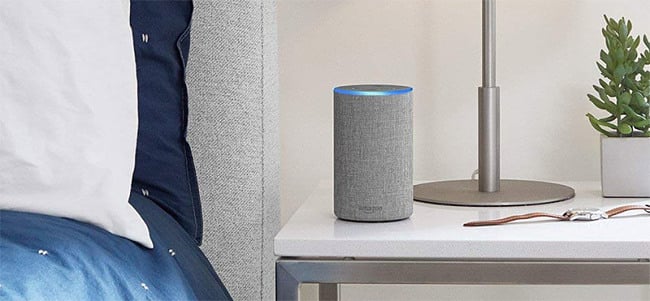
Ring:
Ring is a next level technology that lets you put a ‘ring’ around your home, and it’s one of the most useful IoT devices. The device lets you monitor your house using your smartphone, tablet, or PC. It includes a video doorbell with a wide-angle lens and a built-in microphone and speaker as well as cams that can be put around the home.
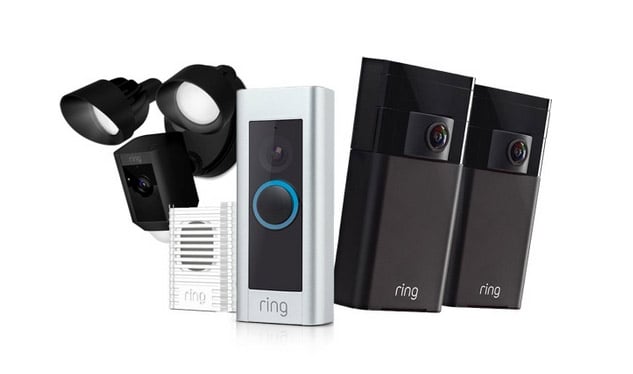
Nest Thermostat:
The Nest Thermostat is the most popular heating and cooling IoT device. The device can quickly learn your family routine and then automatically adjust temperatures based on your routines and preferences. For example, if you usually lower the heat as you go to bed, Nest will learn your sleeping patterns and your preferred temperature levels for the night, morning, etc.
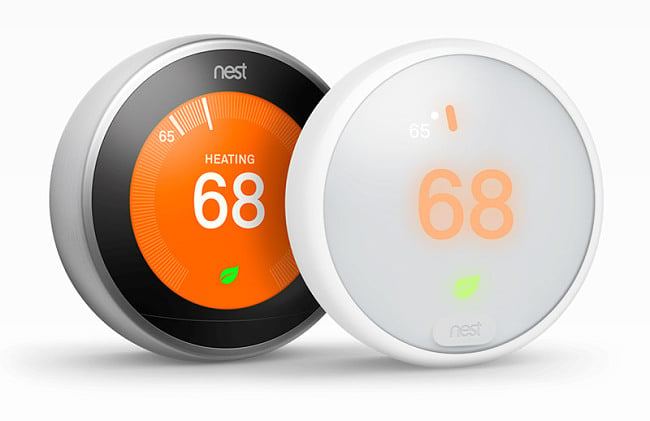
Wink Hub and Philips Hue:
Smart home lighting has grown very popular with the penetration of IoT Home, and the most popular name here is the Philips Hue. This was the first product to leverage the power of IoT into home lighting, and it has color-changing bulbs and app control. Leveraging Wink, you can program exterior lights to change with the sun. You will also be able to program various periods when the lights need to dim down, e.g. during bedtime.
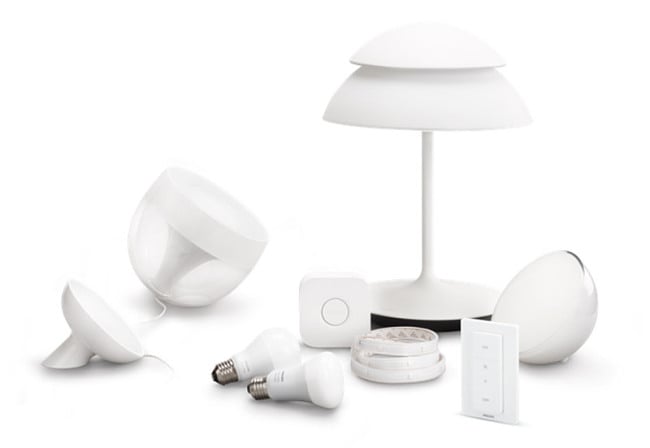
Wearables:
Wearables have become very common nowadays, even reducing the frequency of using your smartphone. Apple, Fitbit, and Garmin are some of the leaders in the wearable market thanks to their advanced smart watches and fitness trackers. Smart watches can be used to receive calls and text messages or even play music without the need to take out your smartphone.
Health oriented wearables offer biometric measurements such as your perspiration levels, body temperature, and heart rate. These and other health statistics are usually, stored, analyzed, and monitored.
They can then be used to provide an early indication whenever an illness or health situation is on the way. You can also track your steps or exercises and know how many calories you have burned that day and whether you have reached your goal.
6 IoT and Data Security
The industry with the most data security concerns is the one closest to home.
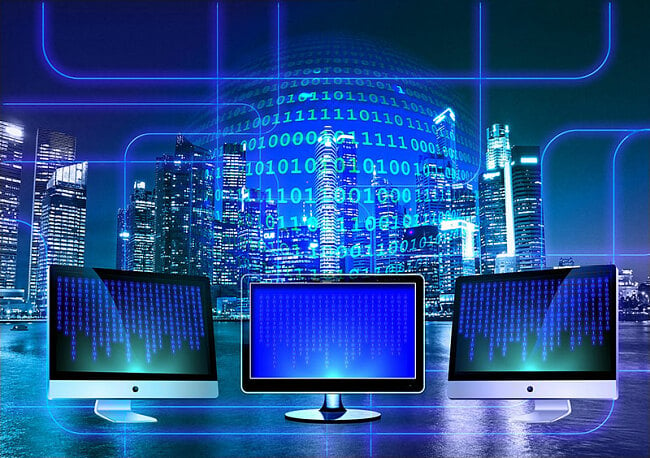
While the growth of IoT at home is viewed as a positive sign, there’s one thing characteristic with IoT devices – data collection. Data collection makes IoT possible, and that’s what all the sensors in IoT are meant for. As reported by FTC, about 10,000 smart homes produce over 150 million points in a single day! Such a huge number means that a lot of data is collected.
While most of it is meant for business and governments to improve service delivery to customers and citizens, it can also be used by malicious groups. The huge number of points present more opportunities for such groups to hack and enter a system to steal a user’s personal information or to cause mischief to whatever is connected.
7 Collecting Data from your Home
Amazon Alexa is available on tens of millions of Amazon devices and third-party device manufacturers. Google Home represents an additional IoT gadget, functioning in a comparable manner and enjoying great popularity among users. Considering the extensive user base, it simultaneously exposes numerous individuals to potential risks.
Since the launch of these IoT “voice assistants”, there have been concerns raised about the privacy and security of users. Questions are often raised over whether they could be used to spy on you, and there’s been no real clarity on that question to date.
Voice assistants work by listening to commands, and therefore pose data threats:
- Microphones are always on listening mode whenever they are switched on.
- A device will not be able to tell the difference between multiple voices – a person can “fake” the owner.
- Audio recordings are always uploaded to cloud servers – this puts your data at risk in case of a cyberattack.
- The device uses the home owner’s location to drive searches and adverts.
- The devices collect data from your recordings for subsequent analysis without your permission or consent.
- Service providers can share user’s personal data with third parties without permission or consent.
8 Securing your Home data
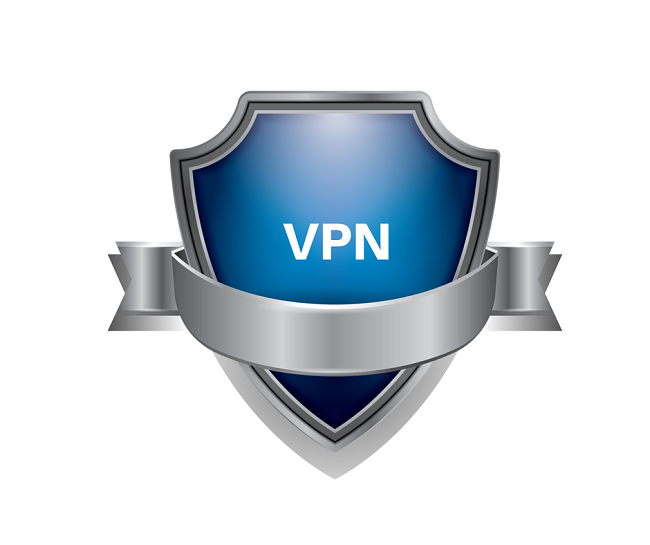
A VPN acts like a blanket over your home data, keeping it safe and contained. Using a VPN that employs AES 256-bit encryption will ensure your security and privacy at all times – ExpressVPN is a great example. This VPN works by encrypting your traffic and securely tunneling it to a server of your choice. This way, your data won’t be passed through your ISP, and will be safe and secure from hackers.
We recommend using ExpressVPN to protect your devices. It offers solid security protocols, and won’t log any of your data.
However, be aware that many IoT devices won’t natively support the installation of VPNs. The best way to ensure that even those devices are protected is by using a router-based VPN. The two VPNs we have highlighted above both provide pre-installed VPN routers directly from their websites.
Final thought
IoT has demonstrated exponential growth over the years and will continue throughout 2024 and beyond. Connectivity of everyday objects brings so many benefits, but so many security concerns at the same time.
By using a secure and reliable VPN like ExpressVPN, you will have that extra layer of security needed to protect your device, and everything in your home at the same time.




